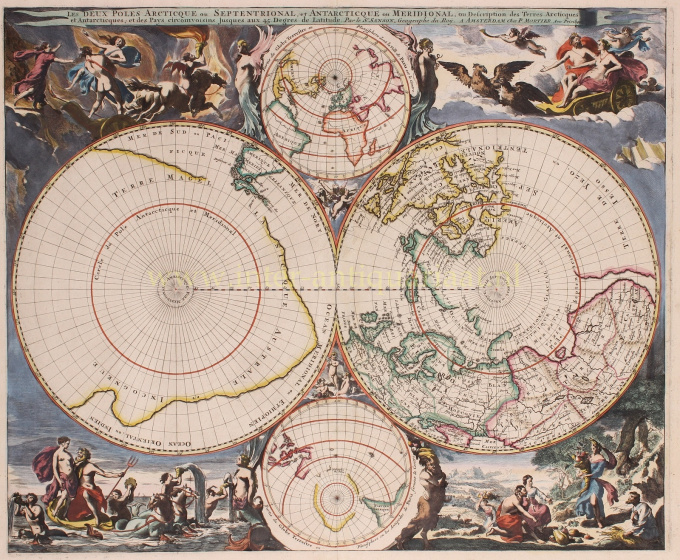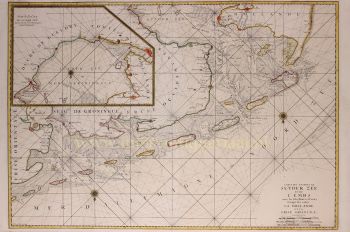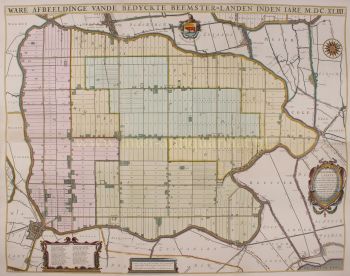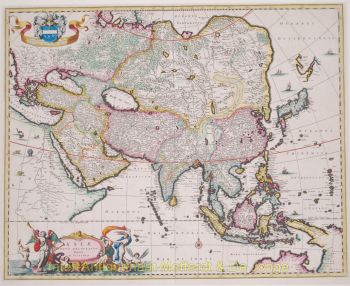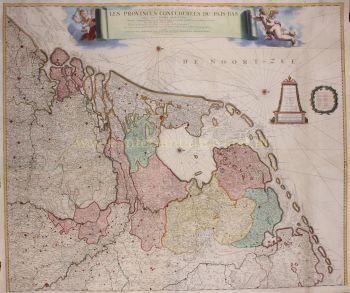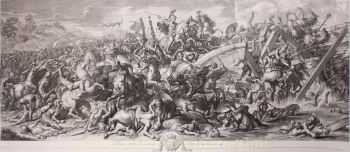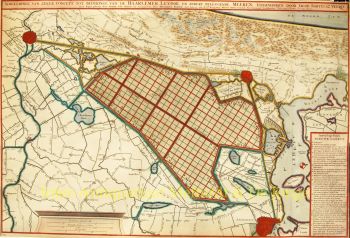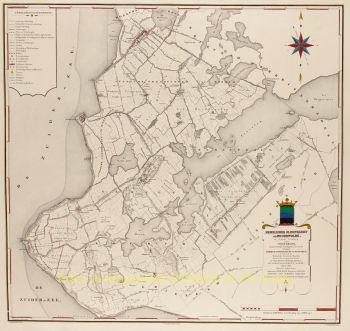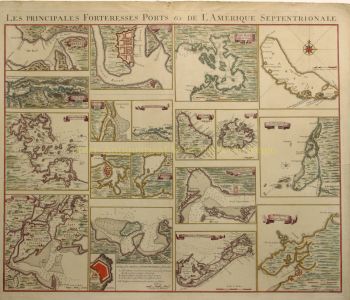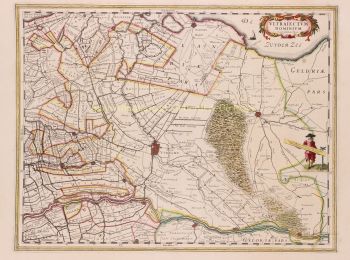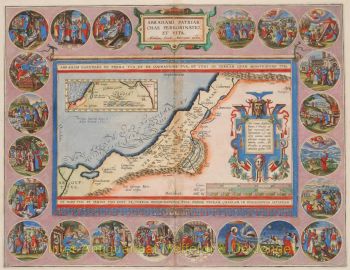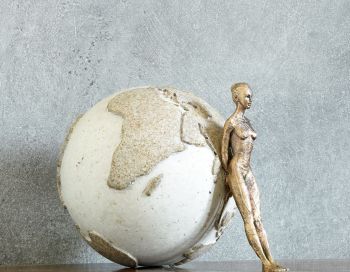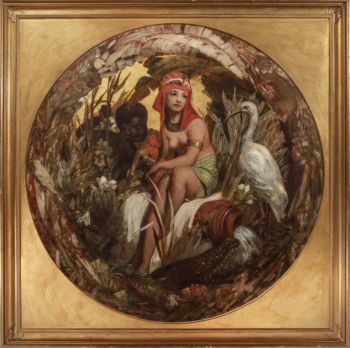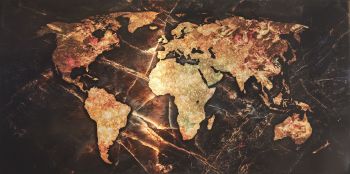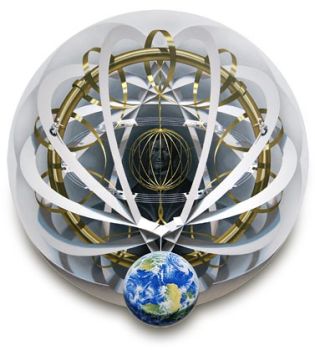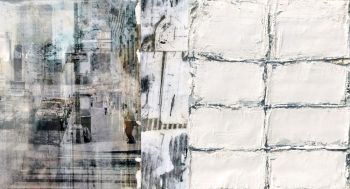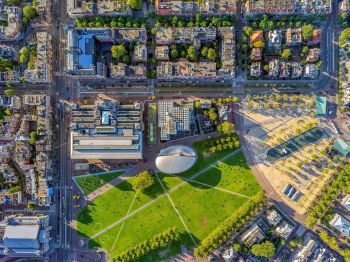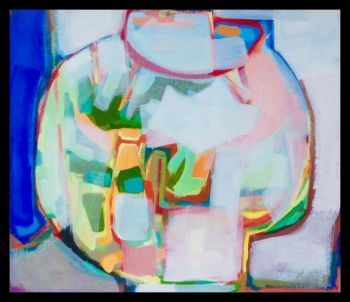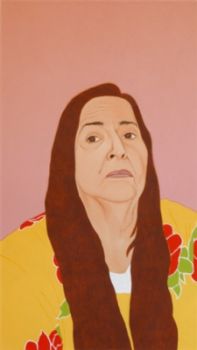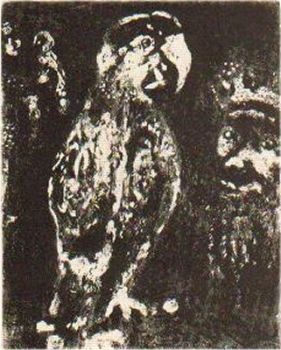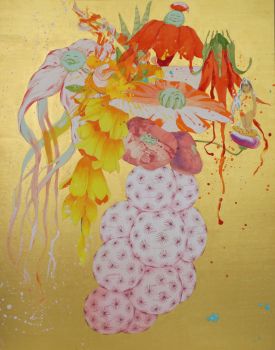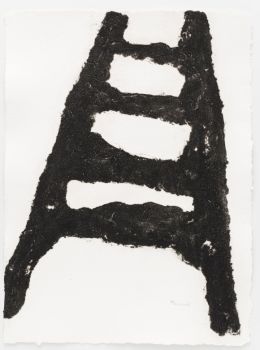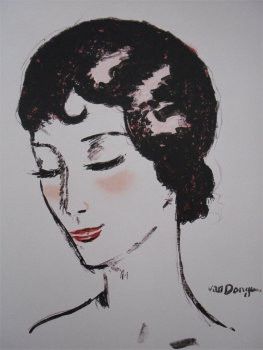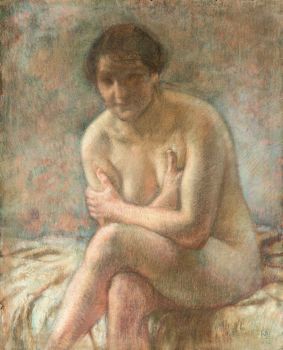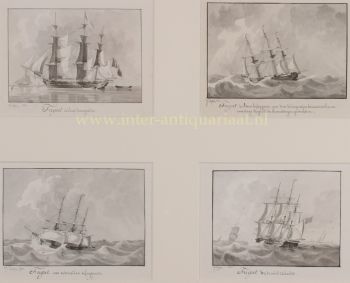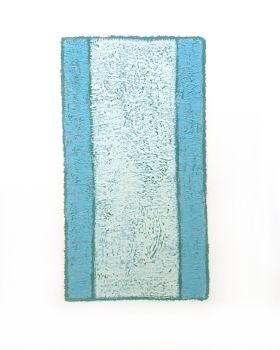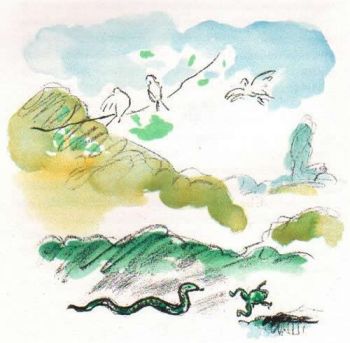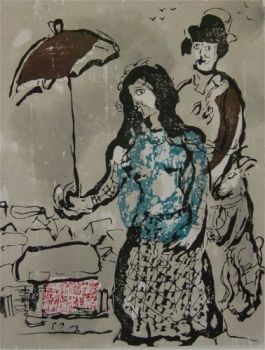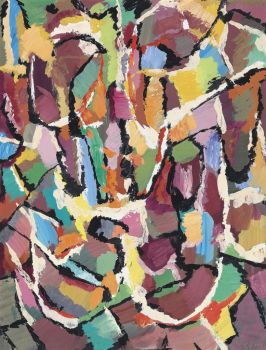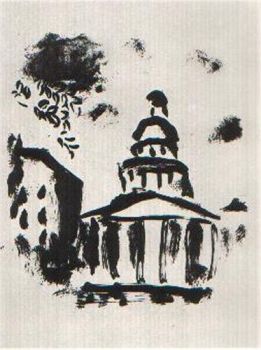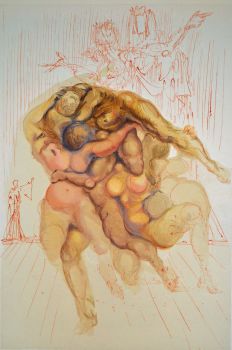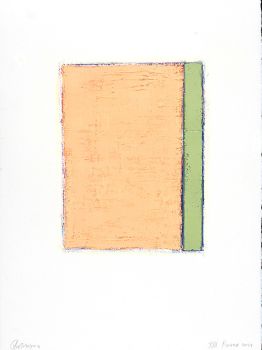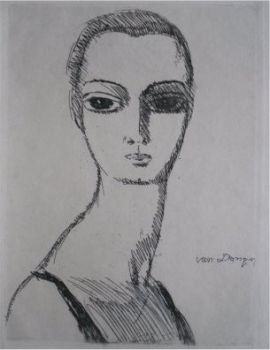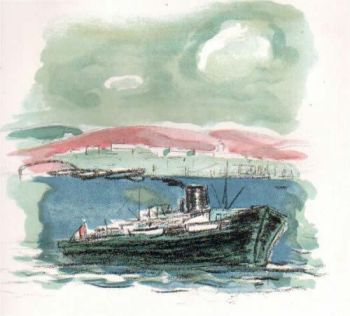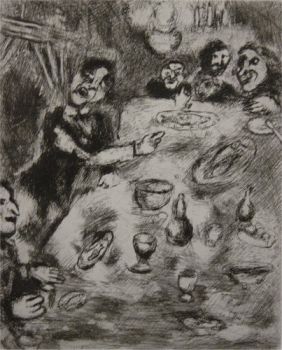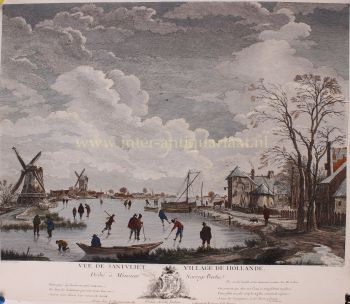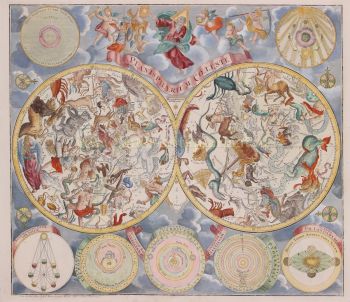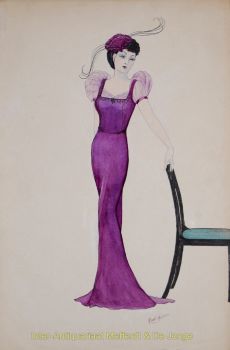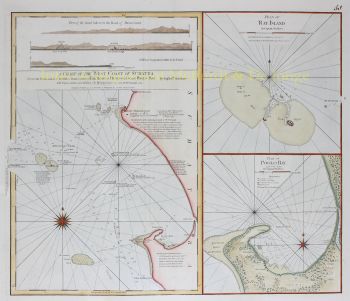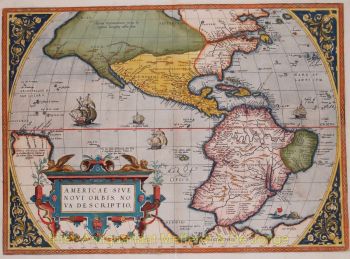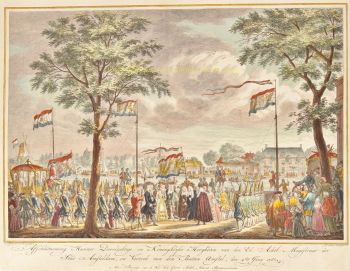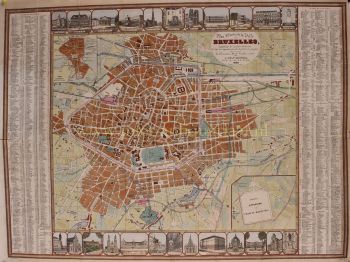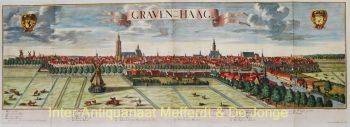North- and South Pole 1696
Pieter Mortier
PapierImprimer
43 ⨯ 52 cm
€ 4.950
Inter-Antiquariaat Mefferdt & De Jonge
- Sur l'oeuvre d'artPOLAR PROJECTION MAP ON TWO HEMISPHERES “Les Deux Poles Arctique ou Septentrional, et Antarctique ou Meridional, ou Description des Terres Arctiques et Antarctiques ; et des Pays circomvoisins jusques aux 45. Degres de Latitude.” (The two poles – Arctic on the northern hemisphere, and Antarctic on the southern, as well as the description of the Arctic and Antartic earth and the surrounding lands up until 45 degrees latitude.) Copper engraving published by Pieter Mortier in Amsterdam after the design by Nicolas Sanson. The map was included in Pieter Mortier's Atlas Nouveau in 1696. With original hand colouring. Size: approx. 43 x 52 cm. This is a beautiful example of Pieter Mortier's double-hemisphere map of the north and south poles. The primary hemispheres focus on the northern and southern thirds of the world. The secondary hemispheres show the entire world, centered respectively on Paris and its antipodes. The geographical content of the primary hemispheres is drawn from the 1657 map of French cartographer Nicolas Sanson (whose title is shared by the present work.) These do not constitute a world map per se. The polar projections end at 45º south and north respectively. The southern polar projection on the right is dominated by a massive southern continent, marked “Terre Magellanique Australe et Incogneue” (the southern and unknown land of Magellanica.) The northern hemisphere shows Europe north of central France and the Black Sea, Asia north of the Caspian Sea and Turkestan, and Spitzbergen and Nova Zemla are shown as partial coastlines. North America shows the Great Lakes in their unfinished form. The northern part of North America is shown including the Saint Lawrence River, Newfoundland, and the Canadian Maritimes. Hudson's Bay, Button's Bay, Baffin's Bay, and the Davis Strait are all shown, with numerous openings in the coastline suggesting the possibility of a Northwest Passage. Greenland is shown as a landmass contiguous with North America, and nearly connecting with Spitzbergen. Additionally, the North American landmass reaches westward to include the speculative “Terre de Yezo, ou Iesso”, which contemporaneous cartographers presented as beginning as the island of Hokkaido. The decorative elements - up to and including the framing of the secondary hemispheres, and the cartouche banner - are copied from Nicolas Visscher’s world map of 1658. Visscher's artist - the Dutch painter Nicolaes Berchem - created nuanced, layered allegorical scenes representing each of the four elements in the map's four corners. The scene for 'Air' in the upper right corner shows Zeus and Hera in a chariot pulled by eagles, with putti flying in attendance. For 'Earth', in a woodland scene at the bottom right, Demeter gifts a hungry mankind the fruits of the Earth, in an overflowing cornucopia. The scene representing 'Fire' in the upper left corner takes place in the underworld, showing the abduction of Persephone by Hades. In the aquatic scene in the lower left, Poseidon woos Aphrodite in a hippocampus-drawn chariot, with mermen bugling wetly from conches and playing tambourines. The top ancillary hemisphere is flanked by angelic figures, while the bottom is flanked by a mermaid (facing the water scene) and a satyr facing the Earth vignette. The cruxes of the four hemispheres are each peopled with a trio of putti. Price: Euro 4.950,-
- Sur l'artiste
Le premier Pieter Mortier (Leiden, 1661 – Amsterdam, 1711) était le fils d'un réfugié politique de France, et devint cartographe et graveur. Il se rendit à Paris en 1681-1685, puis retourna à Amsterdam où il exerça comme libraire de 1685 à 1711.
Il a obtenu le privilège en 1690 de publier des cartes et des atlas par des éditeurs français à Amsterdam pour le marché néerlandais. Il a utilisé ce privilège pour gagner un ensemble similaire de privilèges pour l'impression d'une "bible imprimée illustrée" en 1700. Aussi connue sous le nom de "Bible de Mortier" (néerlandais : Mortierbijbel ou Prentbijbel Mortier), le nom officiel de ce livre était Historie des Ouden en Nieuwen Testaments, verrykt met meer dan vierhonderd printverbeeldingen in koper gesneeden ("Histoire de l'Ancien et du Nouveau Testament: enrichie de plus de quatre cents illustrations imprimées découpées dans du cuivre").
À Amsterdam, il était situé à Middeldam, 1685-1686, puis à Vijgendam, 1686-1711. Son enseigne était "Stad van Parijs" entre 1685 et 1700. Il était connu pour avoir utilisé une adresse d'édition fictive à Anvers et aussi à Londres. Le Short Title Catalog Netherlands attribue la publication de 261 titres à Pieter Mortier I.
Au cours de la première décennie du XVIIIe siècle, Mortier défie le huguenot Estienne Roger pour la domination du marché des partitions polyphoniques en mettant en place une guerre des prix.
Il épousa Amelia 's-Gravensande (1666–1719), qui, en tant que veuve, dirigea son entreprise d'édition jusqu'à sa mort. Le couple a eu deux fils, Pieter Mortier II (voir ci-dessous) et Cornelis Mortier (1699-1783), qui, en partenariat avec Johannes Covens I (1697-1774) a commencé la société d'édition de cartes Covens & Mortier (1721-1866) qui est devenue la plus grand éditeur cartographique du XVIIIe siècle.
Êtes-vous intéressé par l'achat de cette oeuvre?
Artwork details
Related artworks
- 1 - 4 / 24
Cornelis Anthonisz Theunissen
TRÈS RARE PREMIÈRE CARTE IMPRIMÉE D'AMSTERDAM, VILLE EN ASCENSION1544
€ 175.000Inter-Antiquariaat Mefferdt & De Jonge
 Sélectionné par
Sélectionné parDanny Bree
1 - 4 / 17- 1 - 4 / 24
- 1 - 4 / 12

